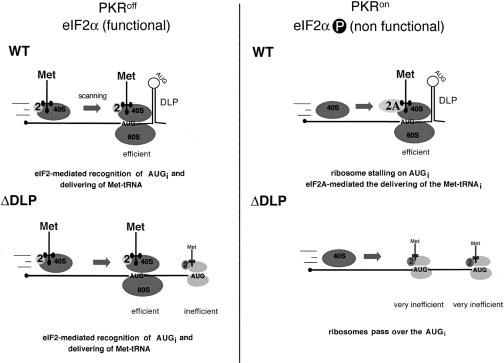Figure 8.
A model for translational resistance to eIF2α phosphorylation of SV 26S mRNA. Proposed mechanism for translation initiation of SV 26S mRNA. When eIF2 is available (PKR0/0 cells), 26S mRNA can initiate by canonical eIF2-mediated recognition of AUGi. In this situation, ΔDLP can efficiently initiate translation and replicate. Under conditions in which eIF2 activity is absent or greatly limited (PKR+/+ cells), ribosomes could still position on AUGi by the stalling effect of DLP. Then, eIF2A could transfer the Met-tRNAi to the initiation complex. For virus lacking DLP, ribosomes cannot position on AUGi in the absence of eIF2 and continue scanning. Low-frequency initiation at AUG 107 in ΔDLP SV is shown in light gray. The efficient and inefficient translation shown is based on data in Figure 5. Met-tRNAi and eIF2 are in dark blue and yellow, respectively. eIF2A is marked in light blue. For simplicity, the rest of the eIFs were omitted.

